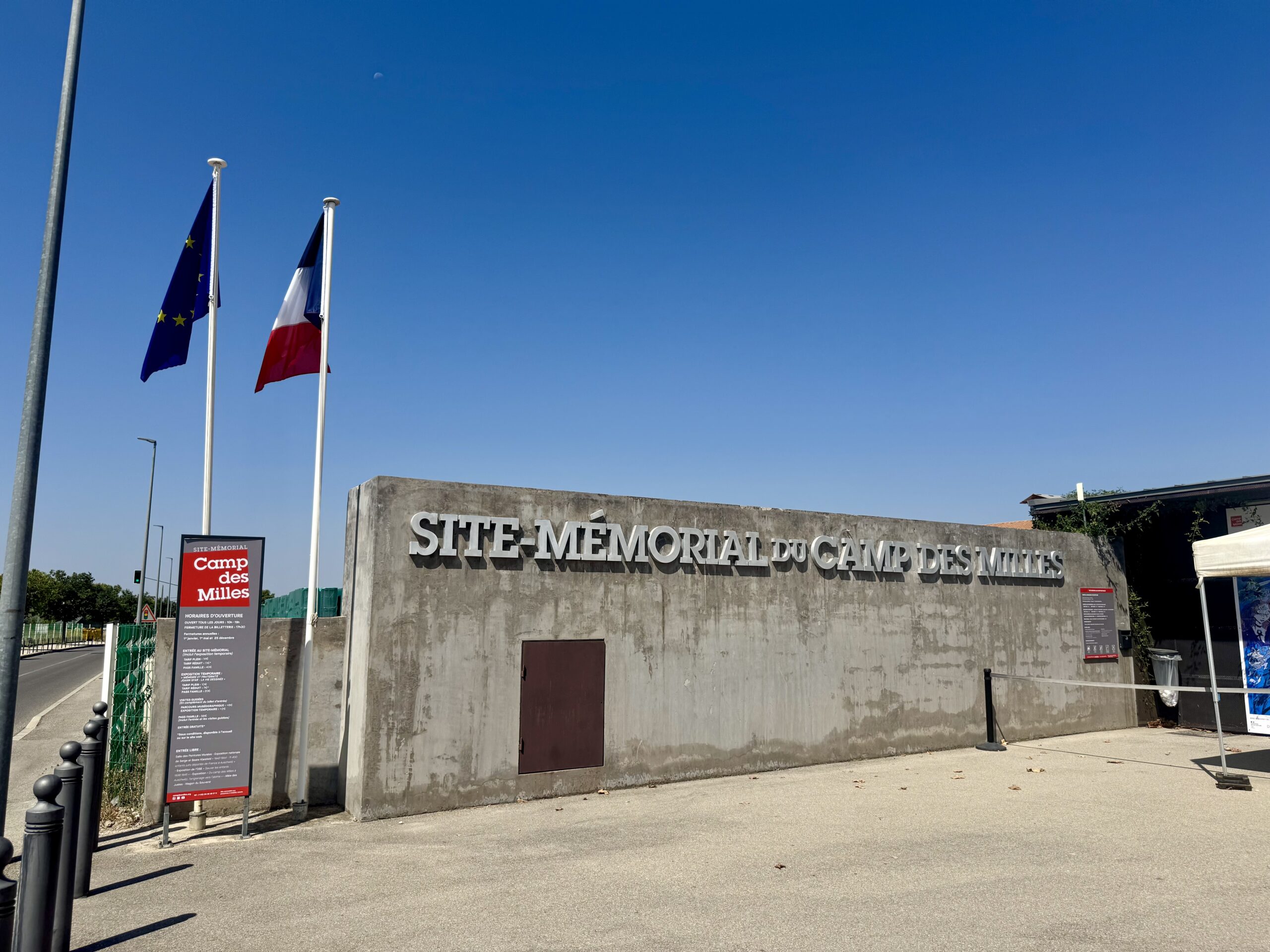A day trip from our stay in Aix-en-Provence was to Camp des Milles, a French internment camp that opened in September 1939. The camp was created in a former tile factory near the village of Les Milles, part of Aix-en-Provence and has remained well preserved.
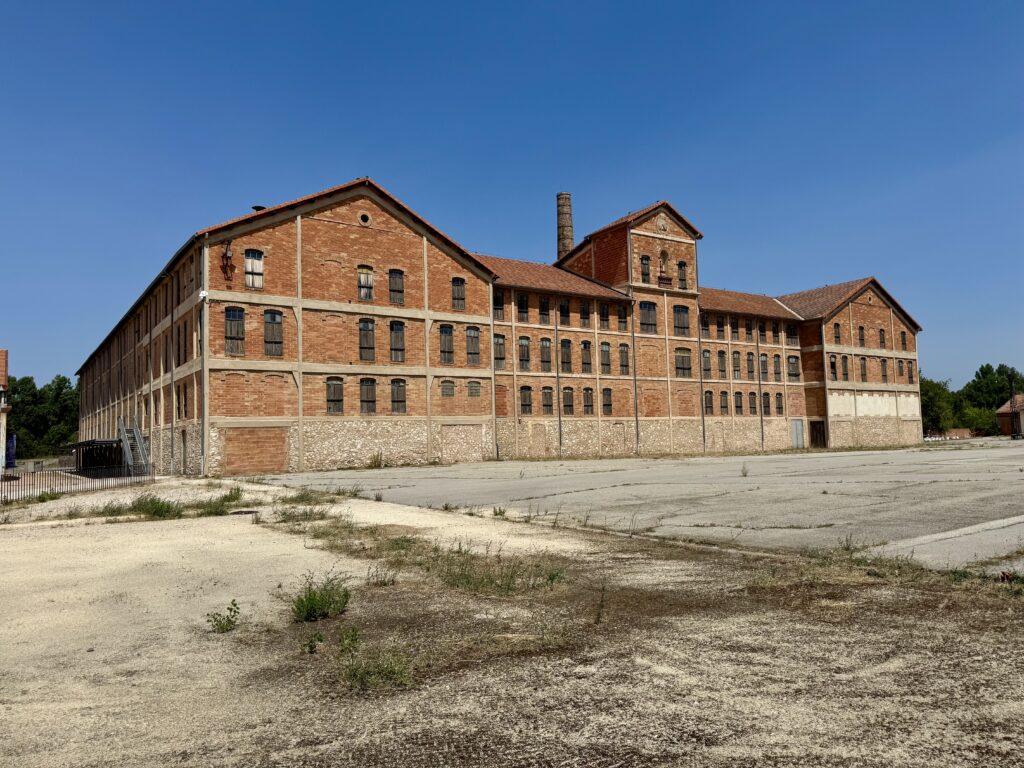
As the only French internment camp to remain intact, it’s now a memorial site and houses a large history museum with a strong focus on education and culture. The numerous audiovisual pieces and illustrations throughout the museum present the history of Camp des Milles and historical contexts between the two world wars.
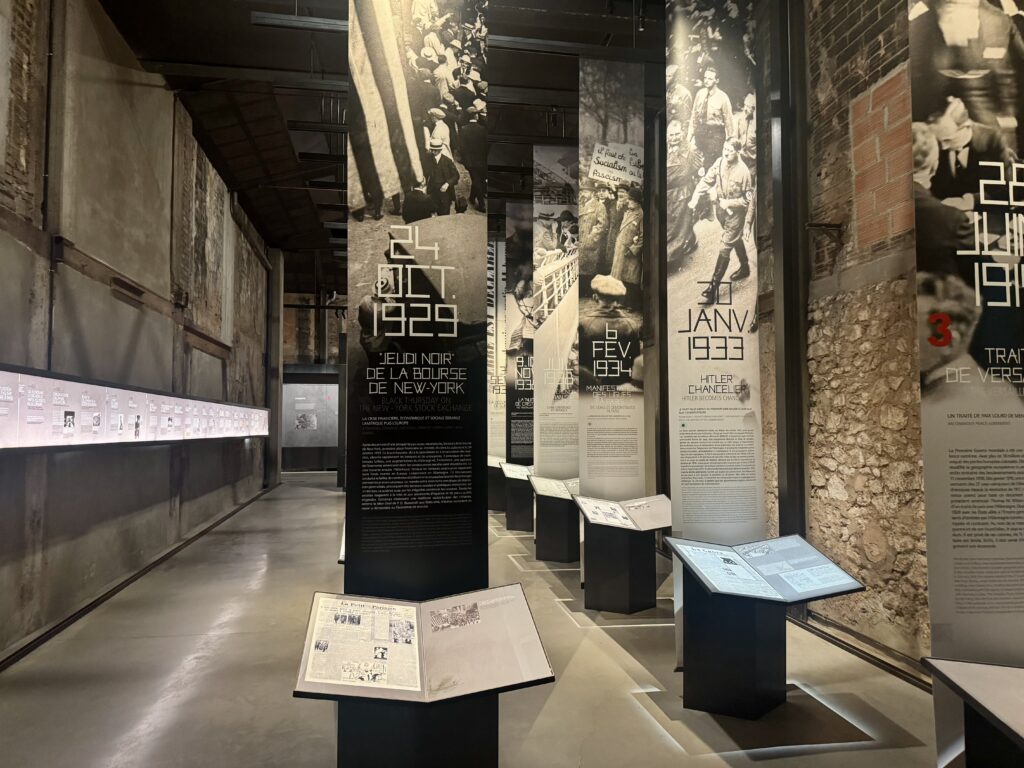
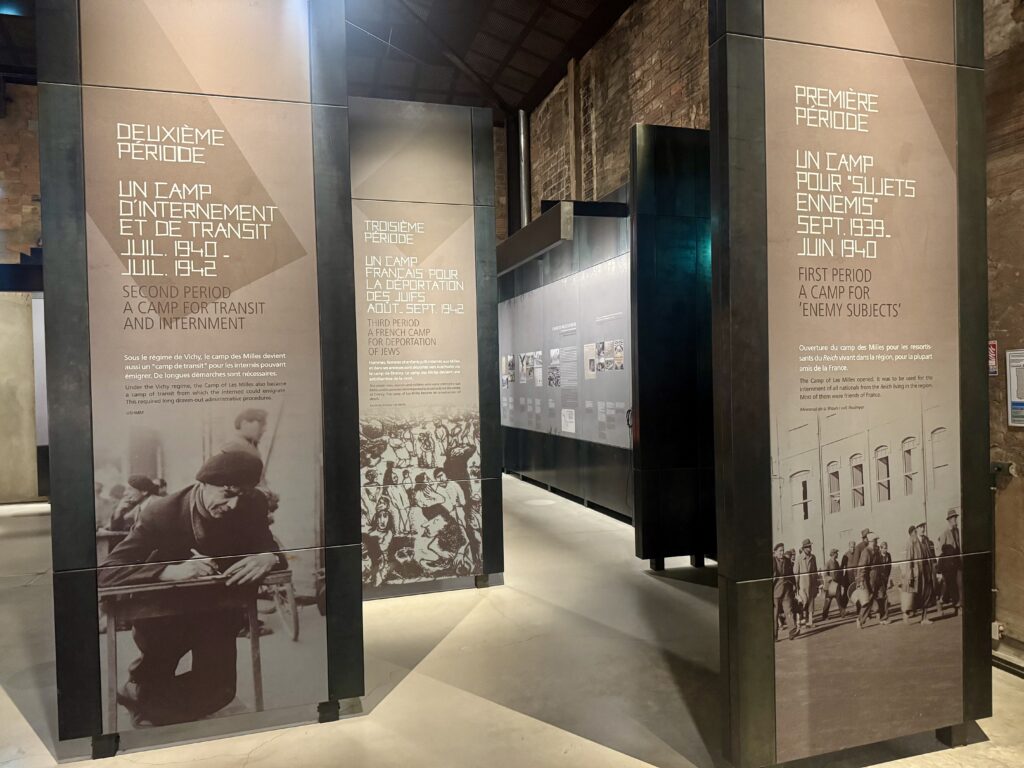
At first, the French government interned mostly Germans and ex-Austrians living in the Marseille area. By June 1940, the camp held around 3,500 artists and intellectuals. An artistic community formed in the camp, including Max Ernst, and many of them created murals on walls, some of which remain today.
Here is an example of when internees made a leisure and performance space, which they named “Die Katakombe.” Cabaret and opera performances alternated there with public readings and theater performances.
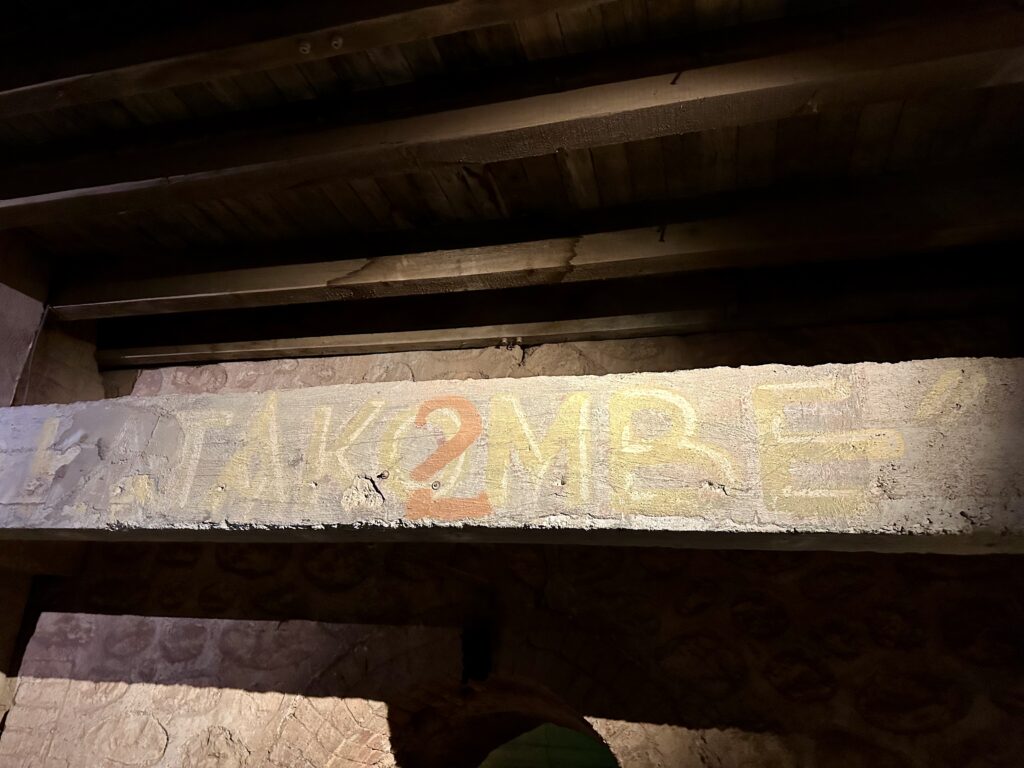
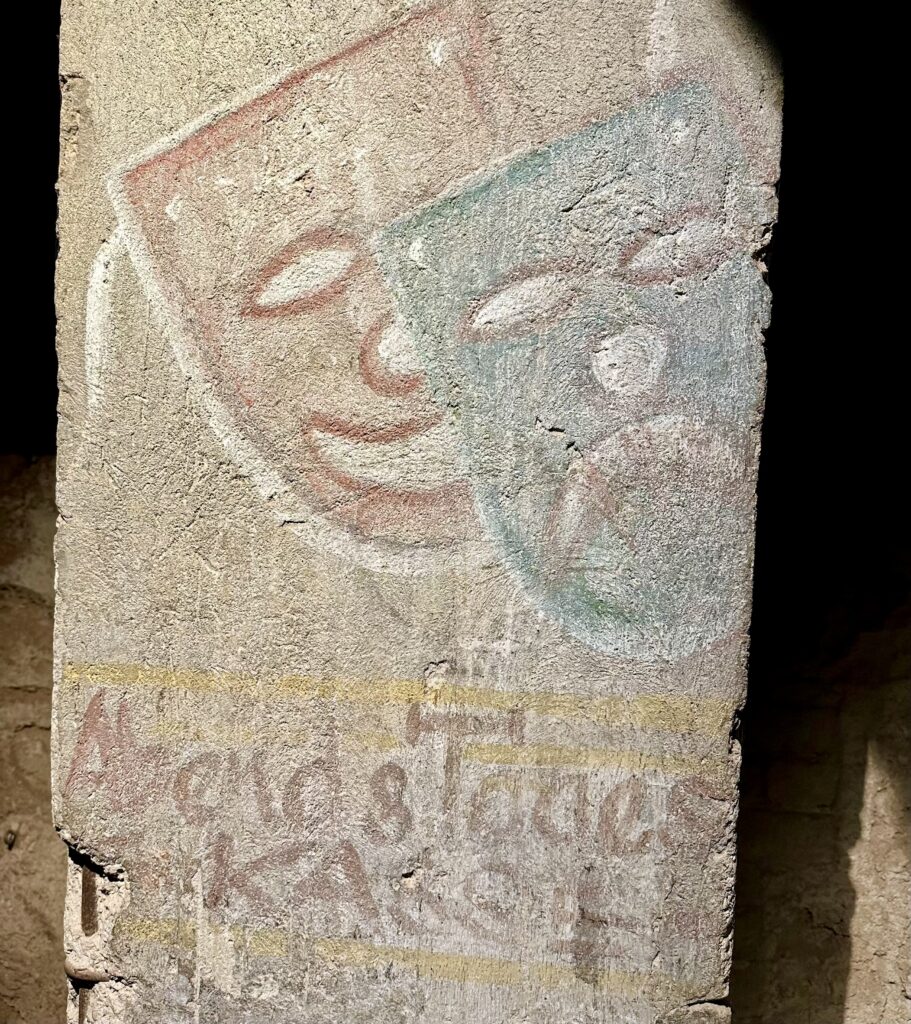
After the Fall of France in 1940, the internment camp under the rule of the Vichy government (the French fascist regime, allied with Nazi Germany that implemented anti-Semitic policies) became a transit camp that sent Jews to death camps during World War II. Altogether, French authorities handed over more than 2,000 Jews interned in Les Milles to the Germans to be sent to Auschwitz.
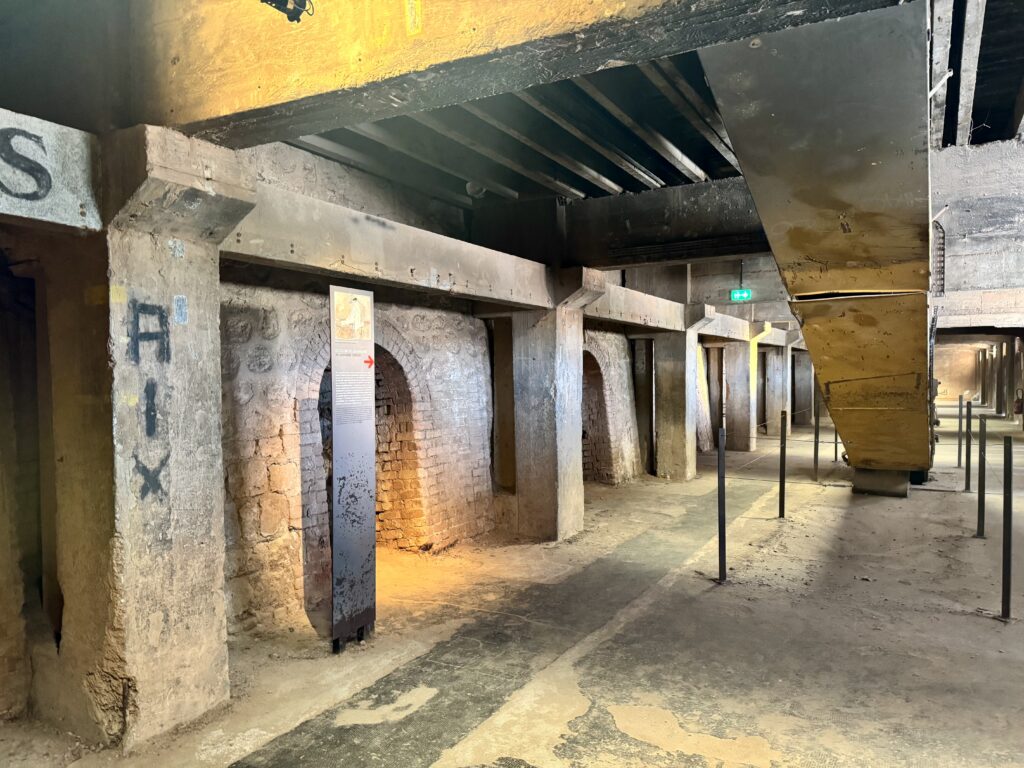
Related: Our summer stay in Aix-en-Provence
Aside from the various displays on the main level in the museum, you can also see different rooms that remain in tact from the time as a factory. The building has been preserved surprisingly well, and signs throughout explain how each room or floor was used during its industrial days versus its time as an internment camp.
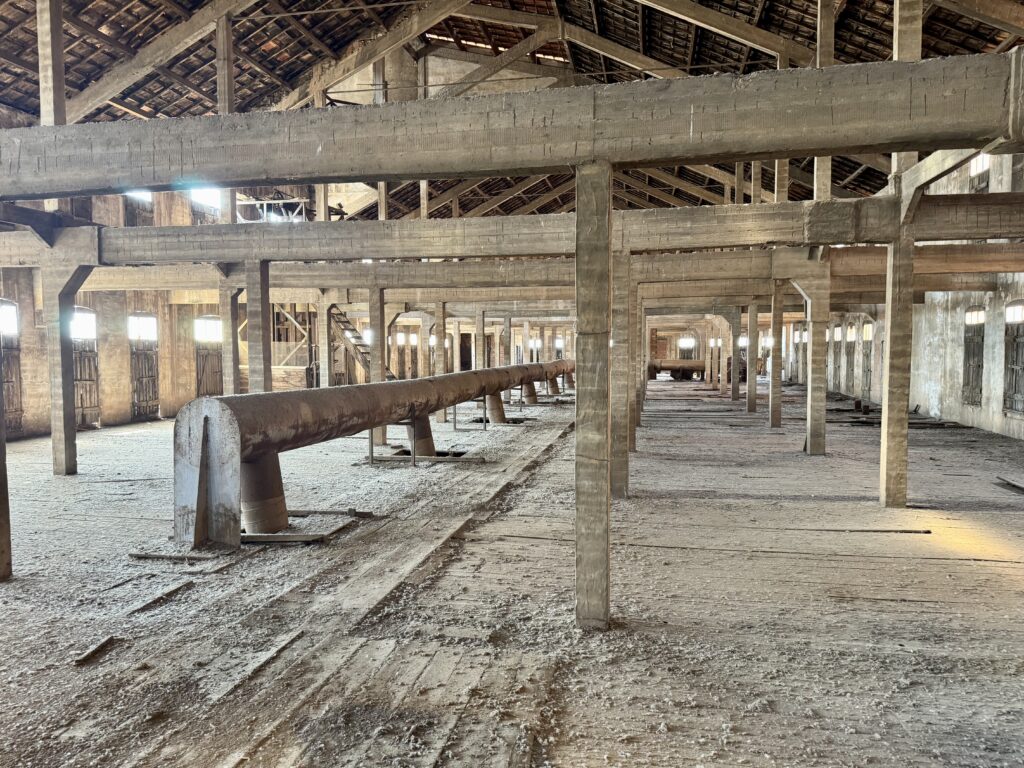
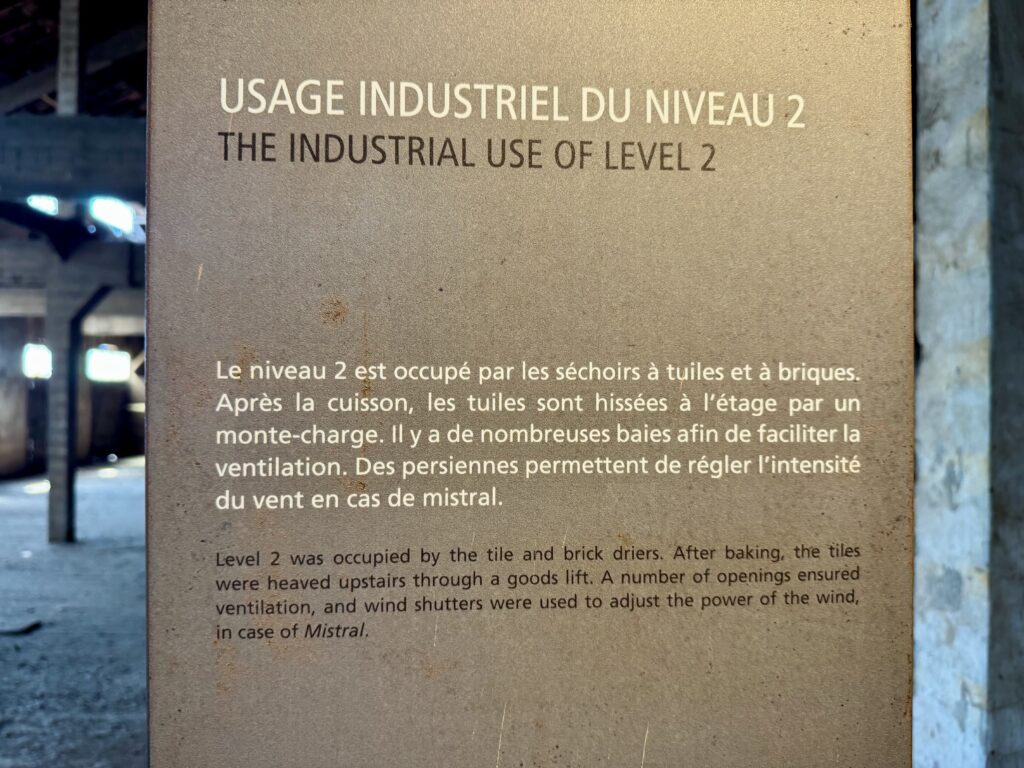
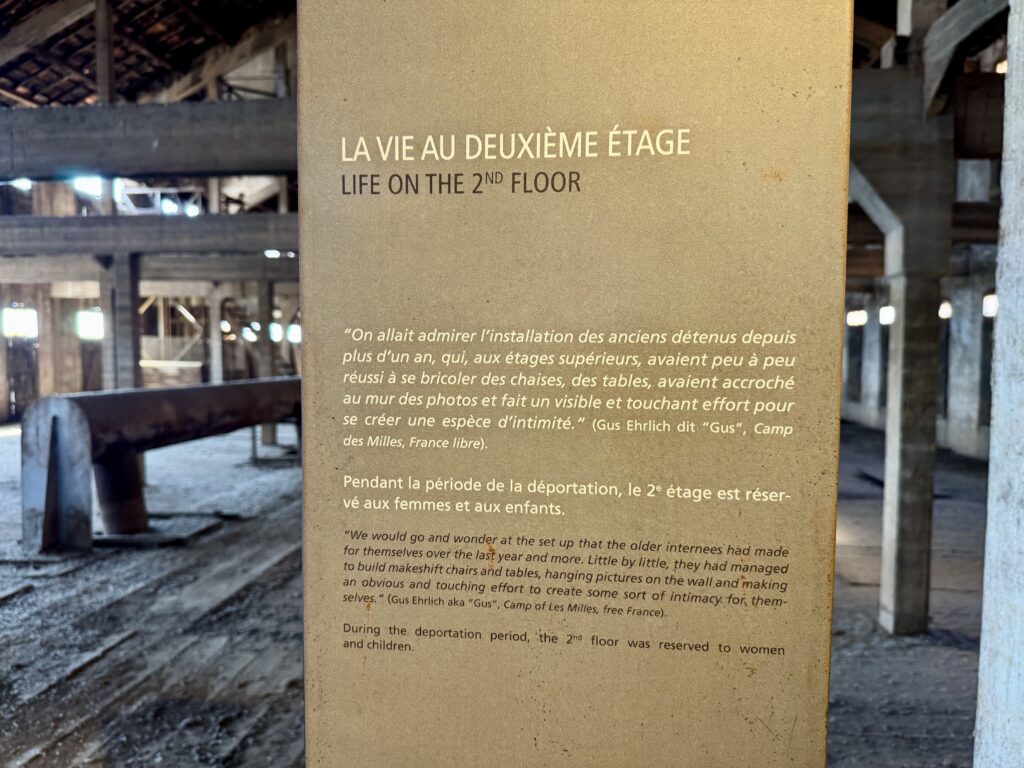
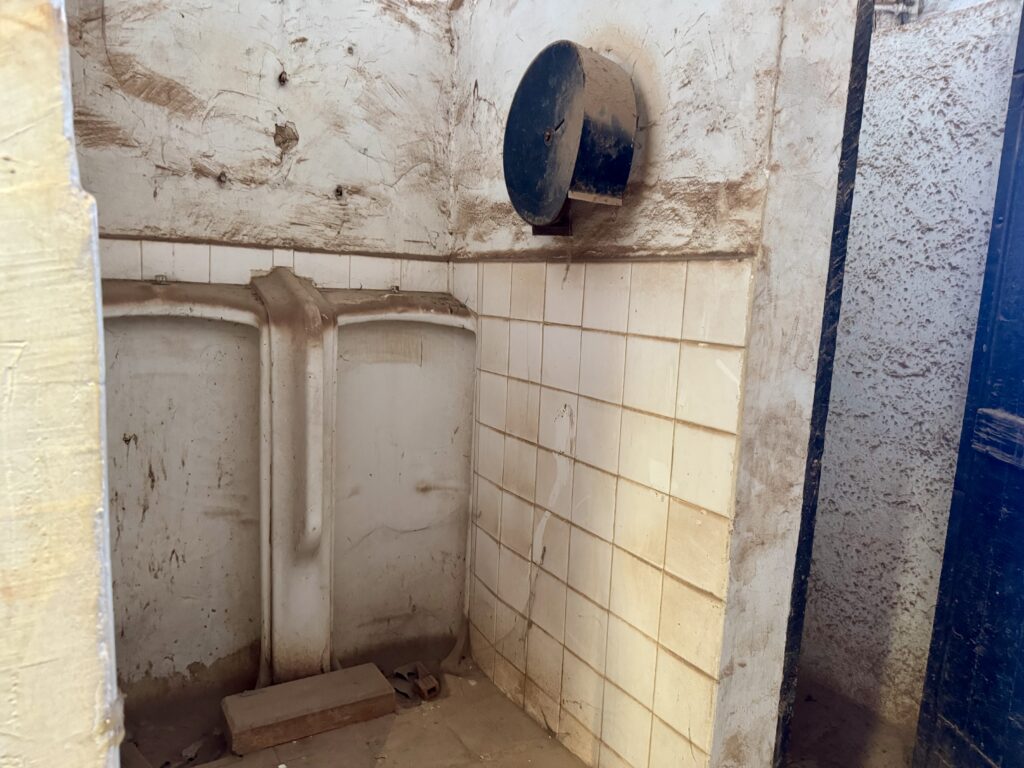
The camp closed in December 1942 with remaining prisoners relocated to the camps of Gurs and Rivesaltes.
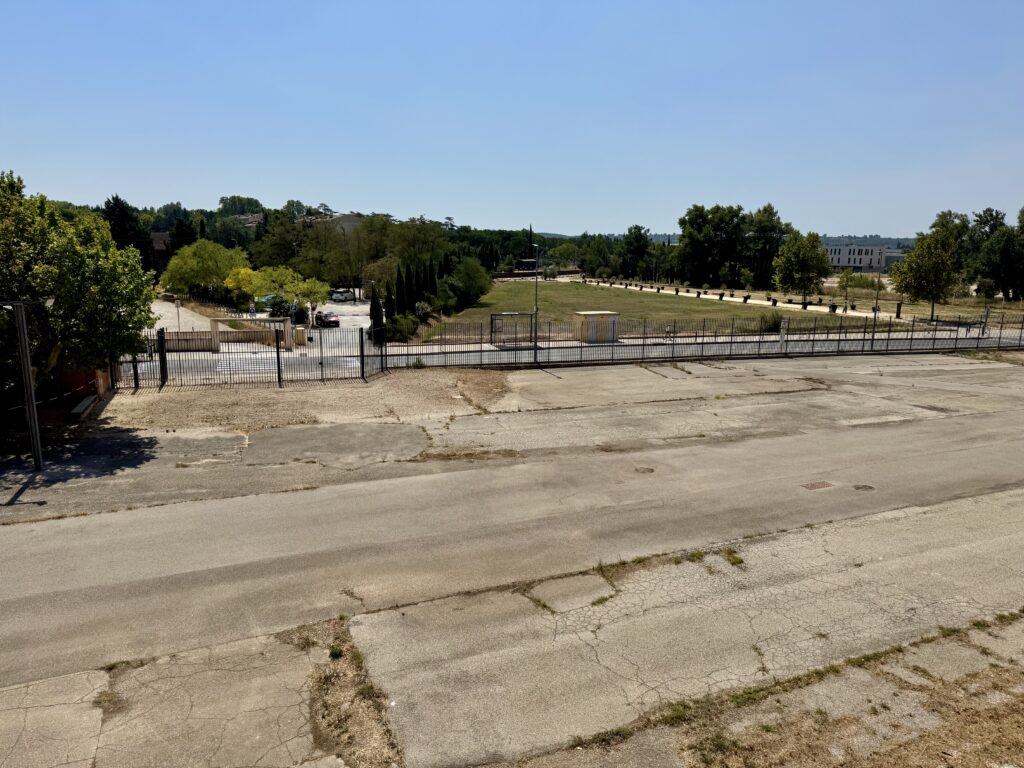
There were plans to tear down parts of the camp in the 1980s, and fortunately the municipality of Aix-en-Provence, along with several survivors and resistance fighters, petitioned the government to save the rooms. They then advocated to make the camp a memorial site which opened to the public in 2012.
Officials inaugurated the Chemin des Déportés (Path of the Deported) in 1990 to honor those deported from Les Milles, lining it with images and stories of people who helped hide or rescue Jews. A few close-ups are below.
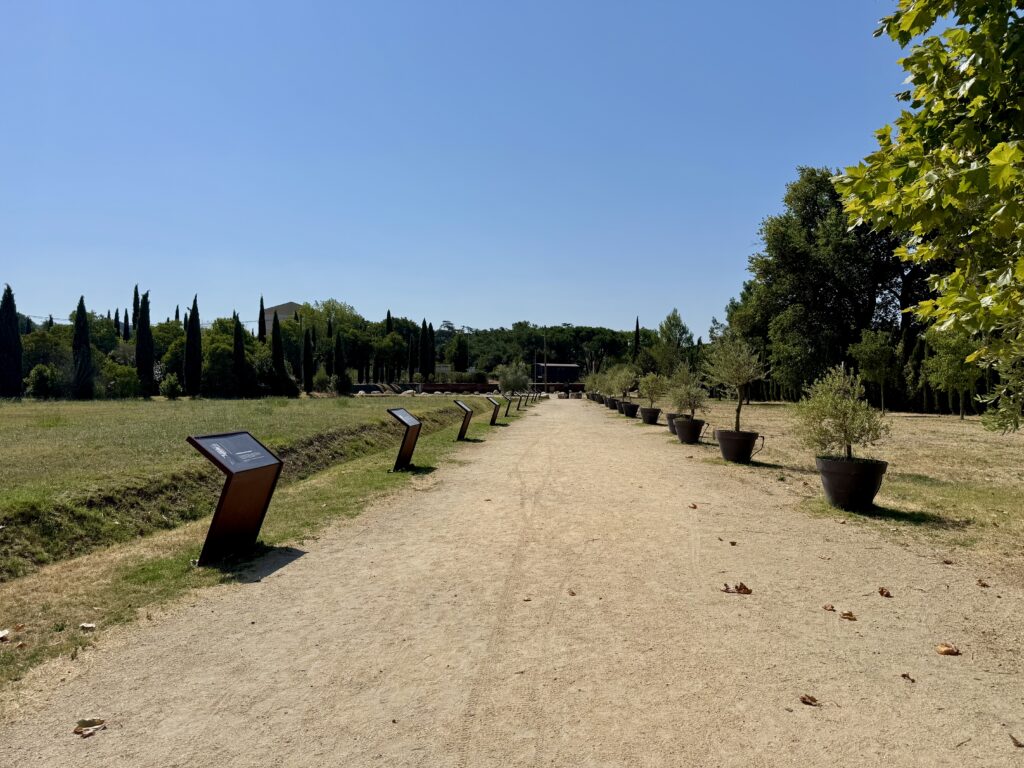
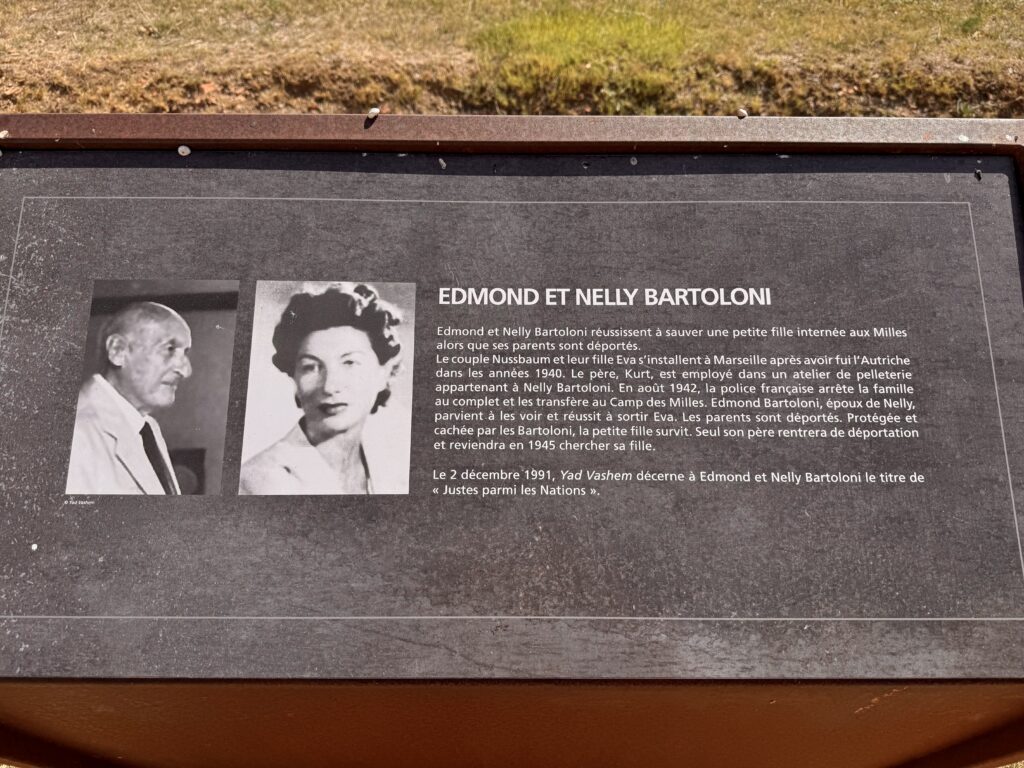
The text translates to: Edmond and Nelly Bartoloni manage to save a little girl interned in Les Milles while her parents are deported. The Nussbaum couple and their daughter Eva settled in Marseille after fleeing Austria in the 1940s. The father, Kurt, is employed in a leather workshop belonging to Nelly Bartoloni. In August 1942, the French police arrested the entire family and transferred them to the Camp des Milles. Edmond Bartoloni, Nelly’s husband, manages to see them and manages to get Eva out. Parents are deported. Protected and hidden by the Bartoloni, the little girl survives. Only his father will return from deportation and return in 1945 to pick up his daughter. On December 2, 1991, Yad Vashem awarded Edmond and Nelly Bartoloni the title of “Righteous Among the Nations“.
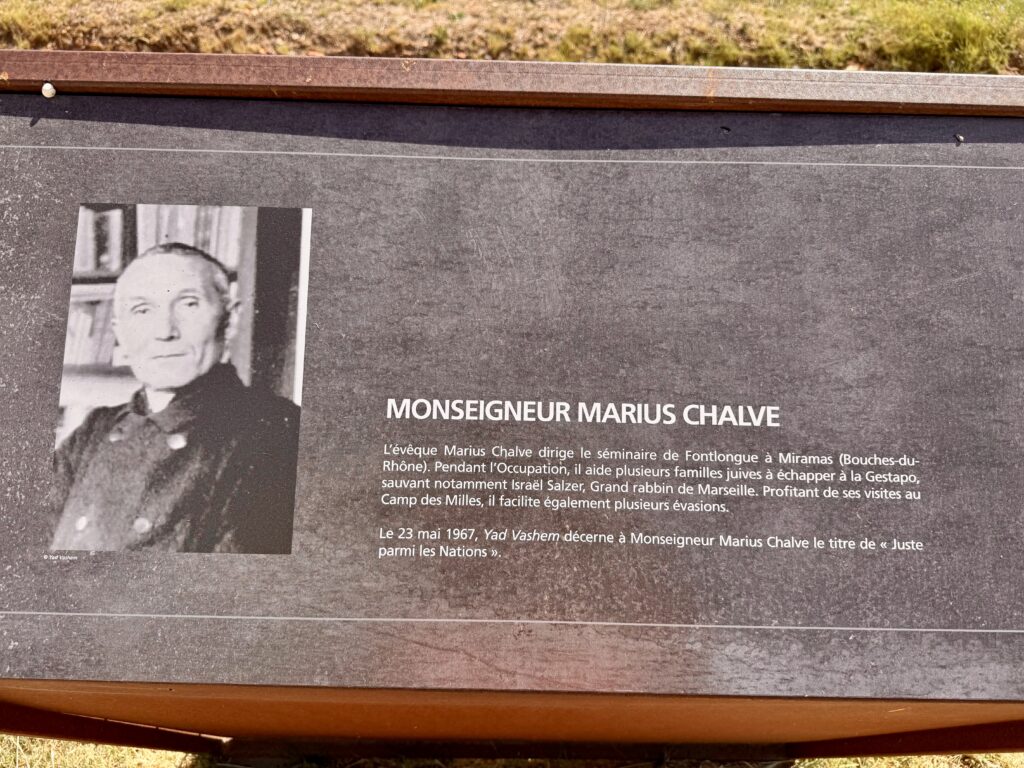
The text translates to: Bishop Marius Chalve leads the seminary of Fontlongue in Miramas (Bouches-du-Rhône). During the Occupation, he helped several Jewish families escape from the Gestapo, including Israel Salzer, Chief Rabbi of Marseille. Taking advantage of his visits to the Camp des Milles, he also facilitates several escapes. On May 23, 1967, Yad Vashem awarded Monsignor Marius Chalve the title of “Righteous Among the Nations”.
Two years later, the Wagon du Souvenir (Remembrance Wagon) was placed at the site where deportations took place.
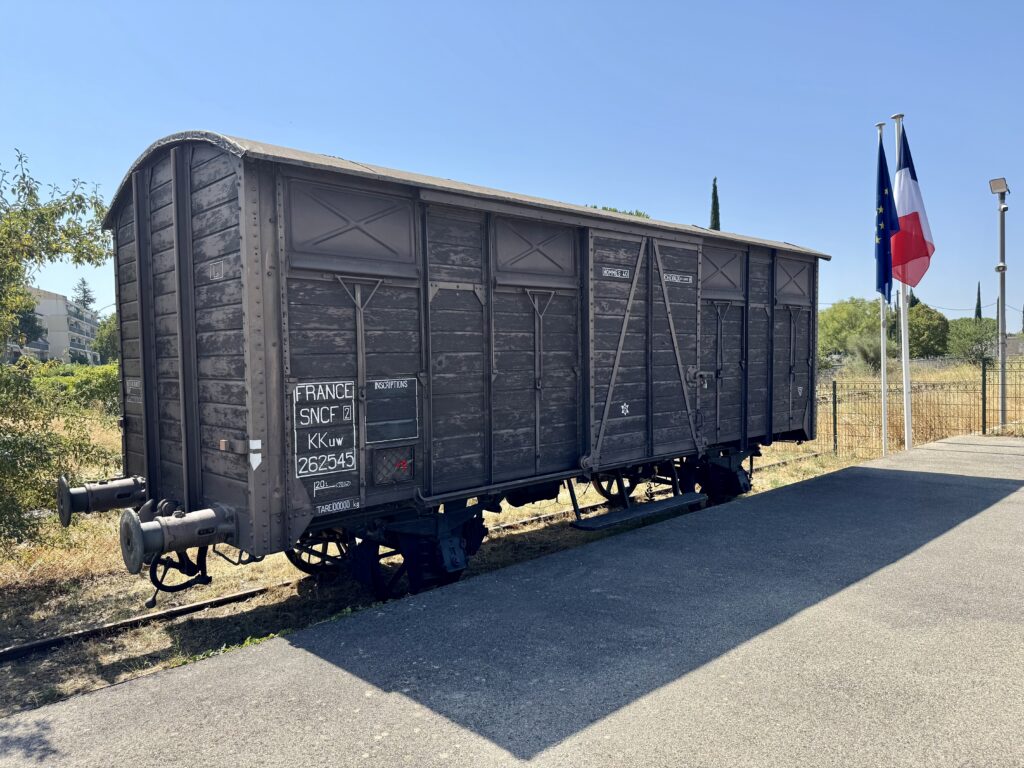
Both Nik and I were very moved during our visit to the Memorial. It seems like history is on the verge of repeating itself in several ways right now and it’s awful to see.
